Positive Health Online
Your Country

Special Handling: Benefits of Chiropractic Manipulation
listed in chiropractic, originally published in issue 209 - October 2013
You're literally in good hands
when you're treated by the best chiropractor.
Though ancient, chiropractic treatment today is compared by its beneficiaries to the ‘miracle’ remedies of the 1920s, like the development of insulin by Frederick Banting and the discovery of penicillin by Alexander Fleming (both men knighted for their breakthroughs). These medications are now almost taken for granted, and seem as basic in medical treatment as aspirin as a common pain-reliever. Those who benefit from chiropractic manipulation, particularly senior citizens, are well aware of its advantages, and they live more physically comfortable lives because of them.
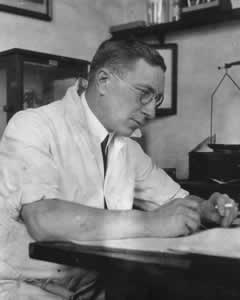 Frederic Banting |
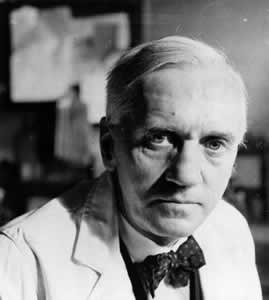 Alexander Fleming |
Chiropractic treatment has helped countless people for millennia. The first known description of physique manipulation dates to ca. 2700 B.C. by travellers returning west from Asia, and records of successful lower back treatments are found in ancient Greek texts. Native Americans used to have small children walk on the backs of the ill, and records exist of the Peruvian Incas using physical manipulation as a healing method.
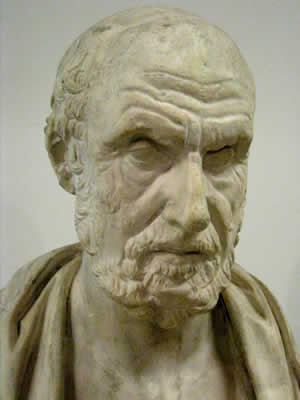
Hippocrates
The science - and it is a science (knowledge), as well as an art (adjusting) - of chiropractic treatment goes back to the time of Hippocrates, who gave his patients several kinds of therapy, one of which we recognize today as chiropractic care. Though he wasn't the world's first physician in the traditional sense, his historical position may be linked more to the survival of his accomplishments' reputation and the universality of the Hippocratic oath, than with historical primacy per se. His tracts, like Manipulation and the Importance of Good Health and Setting Joints By Leverage, shed light on general medical procedures of his day and on some of his own treatments specifically.
One of Hippocrates' comments is very telling and seems to encapsulate the chiropractic concept: "Get knowledge of the spine, for this is the requisite for the treatment of many ailments." The word "chiropractic," itself, evolved from the Greek words cheir and praktos: "done by hand." By literal definition, chiropractic treatment is totally non-invasive.
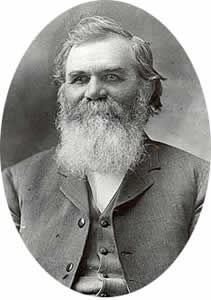 Daniel David Palmer |
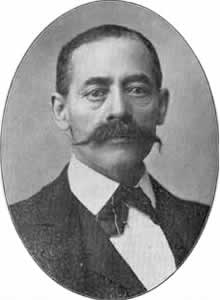 Harvey Lillard |
Modern chiropractic care as we know it got its impetus in September, 1895 when Daniel David Palmer adjusted misaligned vertebrae in the spine of Harvey Lillard, a janitor who had suddenly gone deaf 17 years before, "... when he was exerting himself in a cramped, stooping position ... he felt something give way in his back..." Even the racket of wagon wheels in the streets couldn't penetrate the janitor's hearing - which returned after Palmer's adjustment. While this may be an extreme example of the effects and benefits of chiropractic treatment, it points up Palmer's logic: "I reasoned that if the vertebrae were adjusted, the man's hearing might be restored ... There was nothing 'accidental' about this, as it was accomplished with an object in view, and the expected result was obtained."
We often have preconceptions about unfamiliar fields. This is understandable, and is also true of those who have had no need of - and therefore no exposure to - chiropractic therapy. Having a necessary adjustment will easily dispel long-standing myths for the outsider. As there's more to Michelangelo than the Sistine Chapel, there's more to chiropractic treatment than pushing and pulling. Stereotypes can narrow our views and, more importantly, can limit our experience and horizons -- and particularly our state of wellness and physical comfort.
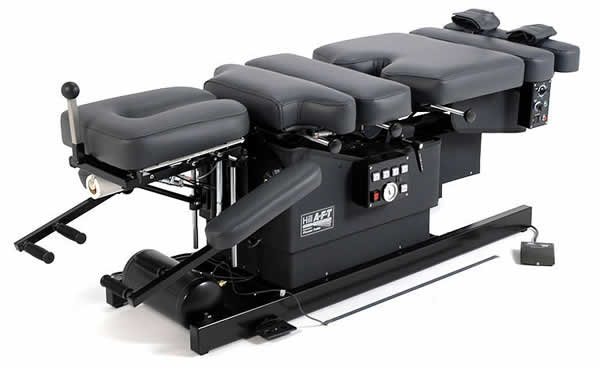
chiropractic table
There are nearly two dozen independent chiropractic treatment methods, and the one selected for each patient is based on the individual's needs or even preferences. The equipment used in treatment today has evolved, like most everything else, from one era to the next, in keeping with current technologies. While Hippocrates may have used a raised marble slab, cushioned with material for his patients' comfort, today's chiropractic tables are adjustable marvels of modern design, conceived specifically for their unique purposes. The "miniature pie crimpers" one might see in examination rooms are in fact special instruments for testing nerve tone and sensitivity.
Some tend to trivialize chiropractic treatment and, worse, refuse even to acknowledge the clear benefits of it for so many. (The academic scholar takes a similar view of the independent historian). For refutation of the negative insinuations, and for endorsement of the work of the chiropractor, one need only consult countless patients who have been immeasurably helped by a chiropractic adjustment. The concepts "Don't knock it unless you've tried it" and "You can't argue with success" have a particular and valid application here.
In many cases the ultimate decisions on course of action should be left to the patient, who would have a choice between opting for a hospital visit involving invasive surgery, medications and traction versus natural, manual adjustment at the hands of a chiropractor. The benefits of the latter would seem to outweigh the marked disadvantages of the former: length of hospital stay, longer-lasting discomfort, and greater costs.
Those who receive chiropractic treatment often walk out of their doctors' offices after one treatment (or several, depending on the patient's problem), feeling they're in a near-state of grace because their therapy rendered them virtually pain-free, or certainly enroute to that point - while those who walk in to a hospital, even on their own two feet, for an invasive surgery often leave it as a casualty.
Beethoven's symphonies have perfect musical architecture, but he was not expected to design buildings. There are certain conditions chiropractic science cannot help and therefore doesn't deal with. It cannot cure cancer, tuberculosis, damaged heart muscle or an organic liver ailment. Any person who claims otherwise should be avoided like the proverbial plague.
The primary feature of chiropractic treatment is spinal manipulation and adjustment. In this age of preference for what's most natural, for certain ailments there seems to be nothing more natural than physical manipulation, accomplished successfully without the need or use of medications or invasive surgeries.
Like the study of a great masterwork - a Brahms symphony, a Gaugin painting, a Dickens volume - the benefits of chiropractic treatment are many and varied for those who seek them.
Comments:
-
No Article Comments available